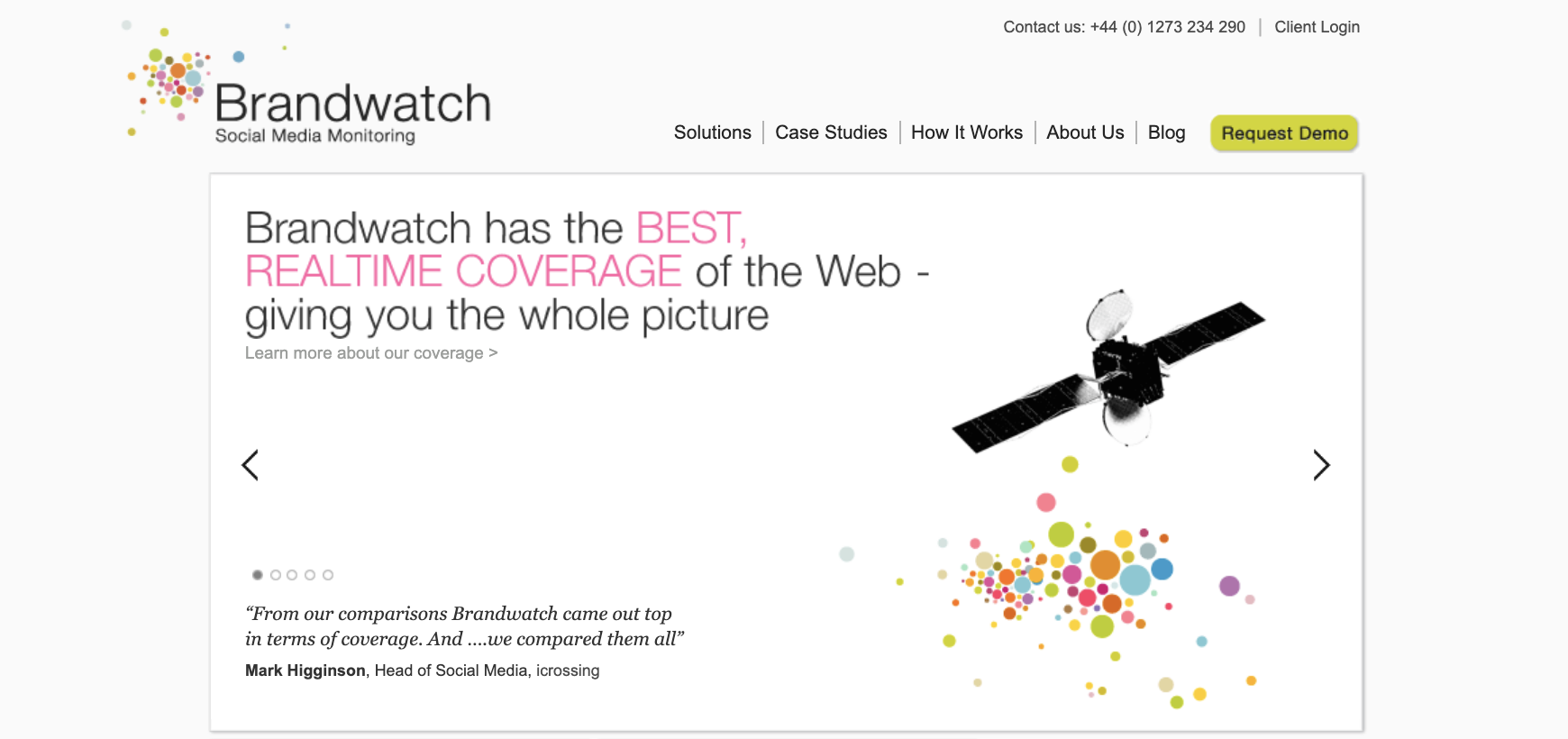In early 2021, Cision acquired Brandwatch, a Brighton (UK) based company, for $450M. Here is the story of how we created, launched and grew Brandwatch. I should know, I was CTO there from day 1.
Why tell this story now? Older blogs are disappearing (you may find some here), and history gets rewritten for better or worse. So here is my account of this amazing journey.
Stage 1: The Foundation, 2000 to 2005
It all started the way startups should start, really: in two pretty miserable, windowless basement rooms packed with desks, 200MHz Linux PCs and 14’’ monitors. Four friends (Guillaume, Steve, Giles, Oli) started Runtime Collective, an egalitarian consultancy creating complex websites. I was more than happy to join them as one of their first employees, fresh out of completing my PhD at the University of Sussex.
Runtime Collective’s website: Web1.0 in its full glory
And fresh we all were - learning from scratch how to build software commercially, using open-source toolkits (the ACS and Aplaws) and building our own Content Management System (Josephine). We made all the mistakes you could think of, and thankfully learnt a bit (a lot!) in the process.
The highlights:
Fond memories of working with great people, even if it wasn’t always for very long. We mostly went different ways ultimately, but it was a great experience. First of all Joe, who I worked with for my first project as a lead - what an amazing developer, and a great human being who left us way, way, way too soon
Through sheer determination, and a lot of ingenuity, managing to launch a dozen or two really cool websites, and building and reusing Runtime’s own CMS, our first experience of having our own ‘product’
Moving from Brighton to Vancouver, Canada. What a place! What a way to do remote work, in 2002. To be fair, the basic tools were already there and made it possible, if not easy. It was an early education in the frustrations of remote work; thank god for (some) face-to-face contact
Working from home, ca2002
What I wish had been better?
A lot of our issues were really SoftDev 101. We started with no tooling, no process. A ton of learning for sure, but this was a very expensive, wasteful way of learning
Maybe, surely, we shouldn’t have spent so much time rewriting stuff, be it Josephine 2 or Aplaws. Over-engineering is a killer
The small-room-with-loud-PCs probably gave me tinnitus (or worsened it). So yeah, look after yourself
Stage 2: The Launch, 2005 to 2010
With time we realised that, to grow like a successful startup should, we had to have our own product. Giles, as the only founder left from the original team of four, led this change of strategy and mindset. Runtime Collective became ‘Magpie’, and I officially became CTO.
We started by launching a couple of flawed search-related products, until we talked to a local marketing agency and an interesting idea came up. Could we build an über-powerful, all-knowing machine which would notice when anyone, anywhere on the web mentions a specific brand or product?
Now that was a challenge, and with some bits of technology we already had, we could have a go at it, and make it ours. It would require time thus money, and Giles was brilliant at fundraising just on the basis of this idea.
Magpie’s website: “Demo coming soon”
The highlights:
Fixing one of our flawed products (Search & Alert) overnight by taking a pretty massive risk (see the first part of my Tale of Two Pivots). Sometimes you need to say ‘Enough is enough’, stop whatever you’re doing, raise the alarm and just think differently
The first time Brandwatch had a pulse. Version 1 was planned to take 6 months to build (it pretty much did!): 3 months to build and scale the backend, 3 months to build the frontend (very un-agile all that). As we got near the midway point, I couldn’t wait any longer and needed to see if all the data we were collecting was genuinely valuable. Cue a couple of hours of off-plan coding, hacking graphs using <table> and voilà: bar charts of how many people talked about some new products, and, guess what? Big spikes on the day when new adverts launched. That day I knew we were really onto something (remember, that was before Twitter was a thing)
How we built and started to scale the dev team. From having a simple process and light-but-insightful tests for recruiting (and finding great talent in a fairly small city), to splitting the team first by speciality (frontend / backend, mistake!) then by product area, to setting up light-touch reporting with KPIs
What I wish had been better?
If only we could have got rid of our legacy products and websites earlier. Easy to say, salaries needed to be paid. But it was a drag. Letting people go (which we had to do, more than once) was definitely worse
Maybe, surely, we shouldn’t have spent so much time creating a very complex, over-engineered user interface, instead of just adding some interactivity with small pieces of Javascript
Our lack of Product Management in the early years. Our limited understanding of customers (we only had one for the first 12 months!). I think it was only 2 years after launching Version 1 that I wrote down 3 high-level use cases (research, weekly / monthly reporting, and live monitoring / engagement)
And Magpie became Brandwatch
And onto Part 2, ‘The Growth’ and beyond…




